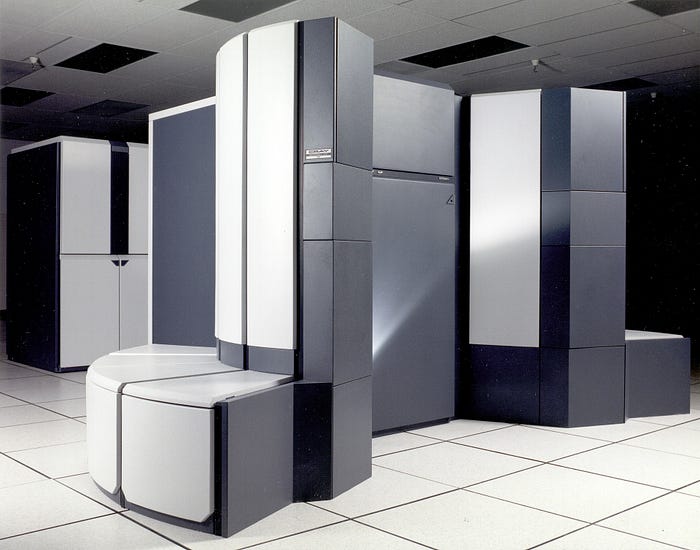Exploring the World of Supercomputers: Power and Performance
Written on
Chapter 1: Understanding Supercomputers
Supercomputers are remarkable feats of engineering and design, showcasing extraordinary computational power that is difficult to grasp. These machines are primarily tailored for scientific research, business analytics, intelligence operations, and military applications. They tackle complex computational challenges, such as climate modeling, drug discovery, DNA analysis, data mining, physics simulations, and advanced mathematical computations.
The cost to develop these supercomputers can be staggering, ranging from $100 million for the Vulcan BlueGene/Q to a breathtaking $1.2 billion for the Fujitsu Fugaku. While most of us may never see these machines in person, the benefits derived from their computational endeavors are widespread.

Measuring Supercomputer Performance
To evaluate a supercomputer's performance, the standard measure today is the number of floating-point operations per second (FLOPS). In the past, computers were often assessed using MIPS (million instructions per second), which could be misleading when comparing different architectures, such as CISC (Complex Instruction Set Computer) and RISC (Reduced Instruction Set Computer).
Floating-point arithmetic is crucial for real-world scientific applications, making it logical to gauge performance based on work output. This is determined using floating-point numbers of varying precision, including single precision (FP32) and double precision (FP64).
Human capability in floating-point calculations is limited; for example, we might manage simple multiplications at a rate of 1–2 FLOPS but struggle with more complex calculations. In contrast, a high-performance Intel computer with a 4.3 GHz i9 processor achieves 1.3 teraFLOPS (1.3 × 10¹² FLOPS), while the Apple M1 Max with 32 GPU cores reaches 10.4 teraFLOPS (10.4 × 10¹² FLOPS).
Notably, today’s personal computers can outperform supercomputers from the 1990s, such as the groundbreaking ASCI Red, which had a peak performance of 1.3 teraFLOPS. In comparison, modern supercomputers can achieve astonishing speeds, like the Fujitsu Fugaku, which operates at a rate of 442 petaFLOPS (442 × 10¹⁵ FLOPS).
The first video explores the "10 Most Powerful Supercomputers in the World 2021," showcasing their capabilities and innovations.
Current Supercomputer Rankings
As of November 2021, the following are the top ten supercomputers globally, ranked by performance:
- Fugaku (Fujitsu — Japan): 442.01 petaFLOPS, 7,630,848 cores
- Summit (IBM — USA): 148.60 petaFLOPS, 2,414,592 cores
- Sierra (IBM/NVIDIA/Mellanox — USA): 94.64 petaFLOPS, 1,572,480 cores
- Sunway TaihuLight (NRCPC — China): 93.01 petaFLOPS, 10,649,600 cores
- Perlmutter (HPE — USA): 70.87 petaFLOPS, 761,856 cores
- Selene (NVIDIA — USA): 63.46 petaFLOPS, 555,520 cores
- Tianhe-2A (NUDT — China): 61.44 petaFLOPS, 4,981,760 cores
- JUWELS Booster Module (Atos — Germany): 44.12 petaFLOPS, 449,280 cores
- HPC5 (DELL EMC — Italy): 35.45 petaFLOPS, 669,760 cores
- Voyager-EUS2 (Microsoft Azure — USA): 30.05 petaFLOPS, 253,440 cores
For the latest rankings, visit the TOP500 project site, which has been updating the list biannually since 1993.
Challenges in Supercomputer Development
Creating a supercomputer demands significant time and financial investment. Achieving such heightened performance entails assembling a large number of processors that work collaboratively, either as a grid or within a cluster. The complexity of the communication links and synchronization needed to transfer vast amounts of data is immense.
Moreover, the energy consumption and heat generation from these interconnected processors necessitate advanced cooling systems, which further contribute to their power-intensive nature. For example, the Fugaku consumes 30–40 MW of energy, enough to supply approximately 20,000 homes. The reliance on fossil fuels for energy exacerbates climate change concerns, prompting researchers to explore renewable energy alternatives.
Future Prospects for Supercomputers
The quest for greater computational power continues, with the goal now set on developing the first exaFLOP computer—three orders of magnitude faster than the Fugaku. An exaFLOP equates to 1 × 10¹⁸ FLOPS, or 1 quintillion FLOPS.
The competition primarily lies between the US and China. The US Department of Energy is working on the Aurora exaFLOP supercomputer, while Oak Ridge National Lab is developing the Frontier, anticipated to reach 1.5 exaFLOPS. Recent reports suggest that China may have already achieved this milestone with two exaFLOP supercomputers, the Sunway Oceanlite and Tianhe-3, the latter reaching 1.3 exaFLOPS.
The supercomputer landscape remains vibrant and promising.
The second video discusses the intriguing story of a $40 million government supercomputer sold for just $480,000, exploring the implications and insights behind this transaction.
Thank you for engaging with this article! Feel free to leave a comment or clap if you found it insightful. To support my work, consider joining my email list or buying me a coffee. If you wish to read unlimited articles on Medium, you can click my affiliate link to become a member.